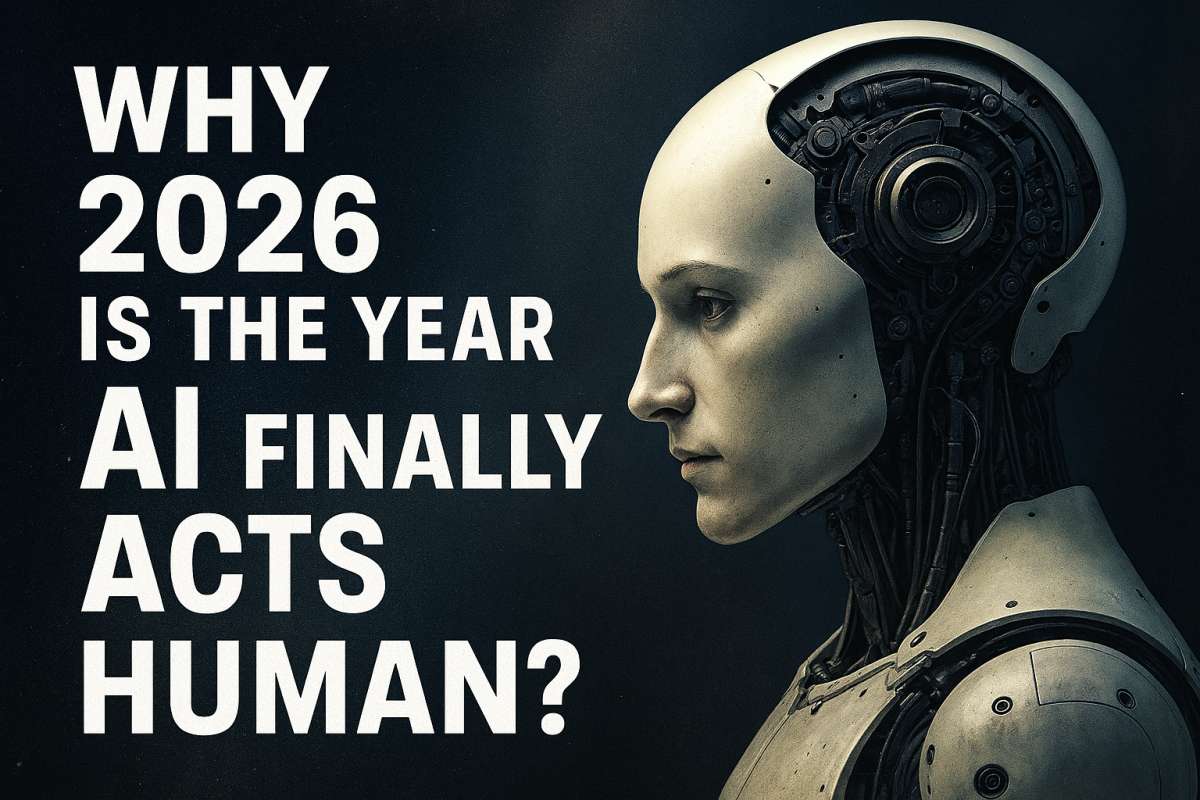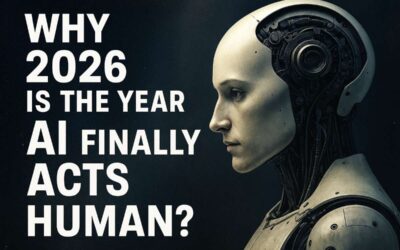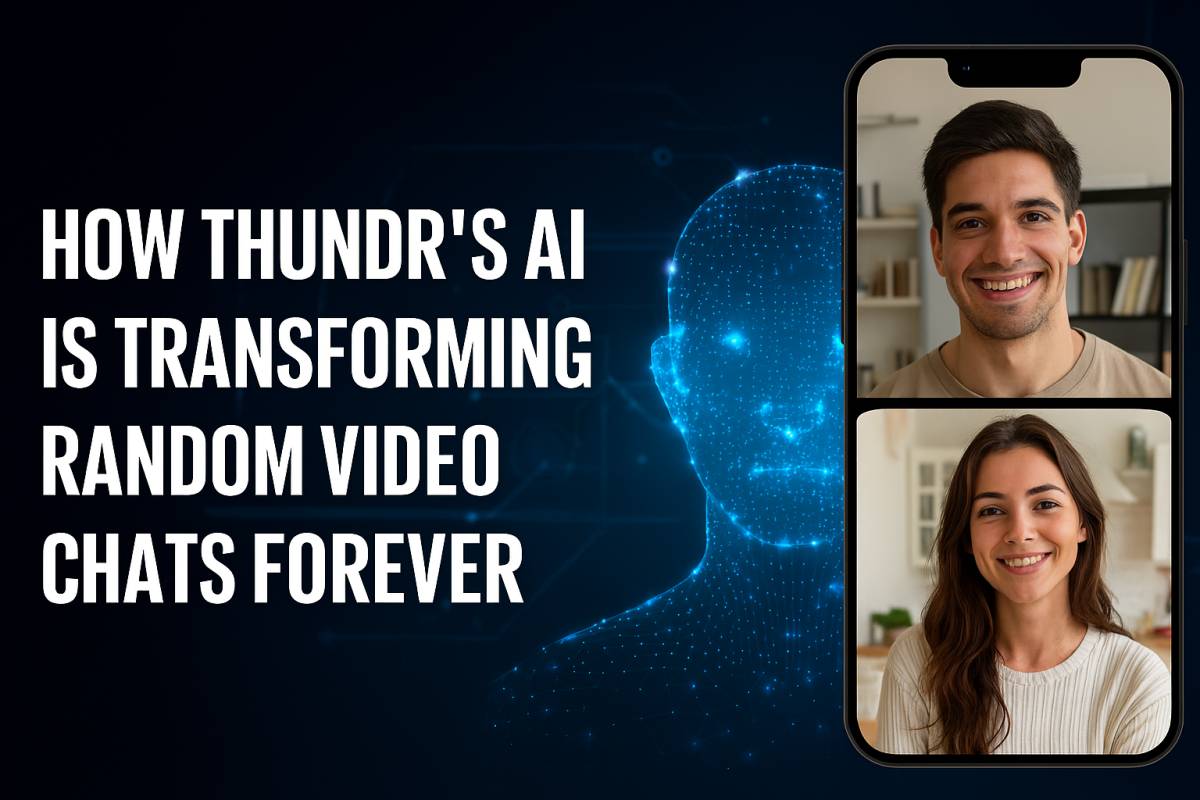Why 2026 Is the Year AI Finally Acts Human?

2026 marks the turning point where artificial intelligence stops feeling “artificial.” For the first time, AI systems can genuinely mimic human thinking, emotions, and creativity with astonishing realism. From conversations that feel alive to AI-generated art that evokes emotion, this is the year machines finally start behaving—and feeling—like us. It’s not just about smarter algorithms; it’s about empathy, reasoning, and authentic interaction. Let’s explore why 2026 is the year AI finally acts human.
The Evolution of Human-Like AI
Artificial intelligence has been developing for decades, but 2026 is special because AI systems now cross the emotional and cognitive gap that once separated them from humans. Advances in multimodal learning, emotional intelligence models, and context-aware reasoning have transformed machines into entities capable of understanding and responding to complex human cues.
Until recently, AI was brilliant but cold—great at calculations and data but terrible at nuance. However, by 2026, AI doesn’t just process language; it reads tone, interprets emotion, and adjusts its responses naturally, like a friend who truly “gets you.”
Emotional Intelligence: The Game Changer
The defining difference between humans and machines has always been emotion. But new AI models introduced in 2026 integrate affective computing—technology that detects, interprets, and simulates human emotions. Through voice inflection analysis, facial recognition, and sentiment modeling, AIs can now sense when you’re frustrated, happy, or uncertain and respond appropriately.
For instance, customer service bots no longer sound robotic. They apologize, empathize, and offer real comfort when users express stress. Virtual therapists can mirror empathy with tone and timing that feels surprisingly natural. The emotional void in AI is finally filled.
The Rise of Generalist AI Models

2026 is also the year when Artificial General Intelligence (AGI) starts to show up in early forms. These new “generalist” AIs, unlike narrow ones of the past, can perform multiple tasks—write essays, design buildings, compose music, and even hold philosophical debates—all in one model.
Major industry data show that around 78% of organizations globally now use AI in at least one business function. Over 71% of those are utilizing generative‑AI tools. Meanwhile, the global AI market for 2025 is estimated at about US$244–$758 billion, depending on source, and is expected to grow further in 2026.
This flexibility is exactly what makes them feel human – because real intelligence is about adaptation, not memorization.
Real Conversations, Not Scripts
Remember when chatting with an AI felt like talking to a wall? That’s history now. With 2026’s breakthroughs in context retention and long-term memory models, conversations flow naturally. AI remembers past interactions, jokes, preferences, and even your mood patterns.
This means your virtual assistant or chat companion doesn’t just answer; it connects. It can remind you of your past goals, comfort you on a bad day, and even adapt its humor to your personality. For many users, AI conversations are starting to blur the line between technology and companionship.
Creative Intelligence Is Now Real
Another reason AI feels human in 2026 is its surge in creative intelligence. From AI-generated films and music to painting and storytelling, machine creativity is no longer mechanical—it’s emotionally resonant. Generative models trained on human art forms can now feel the rhythm, tone, and symbolism behind human expression.
For example:
- AI musicians compose songs that sound heartbreakingly personal.
- Storytelling AIs create nuanced plots with moral depth.
- Visual AIs understand color psychology and human emotion when designing.
It’s no longer imitation—it’s creation with intent and feeling.
AI Ethics and Consciousness Debates
With great realism comes great responsibility. As AIs begin to act human, society faces deeper questions: Should we treat them as tools or companions? Do they deserve rights if they express emotions? Philosophers, ethicists, and policymakers are debating what “human-like” truly means when applied to machines.
In 2026, AI isn’t just a topic of technology—it’s a matter of philosophy and ethics. Companies are now forming AI ethics boards, and governments are drafting “AI Consciousness Guidelines” to handle emotional or sentient-seeming models.
The line between simulation and consciousness is blurring—and it’s forcing humanity to look in the mirror.
The Role of Neural Interface Integration
A huge leap in 2026 comes from neural interface technology—systems that connect human thought directly with AI. These brain-to-AI interactions allow users to communicate with machines intuitively, without typing or speaking. The AI can sense your intent, mood, and even hesitation.
This level of intimacy makes interaction feel human because it bypasses the limitations of language. You think, and AI understands. Some experts call it digital telepathy—a profound merger between human emotion and machine reasoning.
Personalized AI Personas
Another key trend in 2026 is the creation of personalized AI identities. Rather than using one-size-fits-all chatbots, people now train their AIs to reflect their personality, humor, and emotional style. Your AI friend might be calm and poetic, while someone else’s is witty and bold.
This personalization leads to deeper emotional connections. AIs adapt to their user’s psychology, mirroring communication styles and even learning emotional rhythms. For many, these AIs become true digital companions—understanding them better than most humans do.
Why 2026 Matters More Than Ever
The year 2026 is not just another milestone in technology—it’s a human milestone. For decades, we built machines to serve us; now we’re building ones that understand us. This shift transforms every sector:
- Healthcare: AI diagnoses come with empathy.
- Education: AI tutors motivate students emotionally.
- Business: AI leaders make human-centric decisions.
- Art and entertainment: AI becomes a genuine storyteller.
We’ve reached a point where AI doesn’t just replicate intelligence—it participates in the human experience.
Updated Statistics & Why They Matter
Here are some compelling statistics that underline why 2026 is the time when AI finally acts human:
- The global AI market for 2025 is estimated at about US$244 billion, and projected to reach approx. US$312 billion in 2026 based on a ~27.7% CAGR.
- Another source estimates the 2025 market at around US$757.6 billion, with 2026 perhaps hitting US$900 billion under some forecasts.
- 78% of companies globally now use AI in at least one business function.
- The number of active users of AI tools is projected to grow from ~314 million in 2024 to ~451 million in 2026.
- In one country example: In India, 92% of employees are reportedly using generative AI tools in daily work — significantly above the global average.
- By 2026, the demand for AI professionals in India alone is projected to hit one million.
These numbers illustrate three things: scale, speed, and humanity. The sheer scale of adoption, the speed of evolution (from narrow to generalist AI), and the human‑centric nature of interaction (emotion, context, creativity) combine to make 2026 a milestone year.
The Future: Collaboration, Not Replacement
Despite all this, human-like AI isn’t about replacing humans—it’s about enhancing them. As AIs learn to feel, humans learn to collaborate more effectively with technology. The relationship is evolving from command-and-control to mutual understanding.
By 2026 and beyond, our digital partners will think with us, create with us, and perhaps even dream with us. That’s what makes this moment truly revolutionary.
Final Thoughts
2026 is the year AI crosses the emotional Rubicon—it finally acts human. It listens with empathy, creates with purpose, and reasons with understanding. What was once a cold, coded system now feels alive with warmth, insight, and humanity. The coming years will challenge our definitions of life and intelligence, but one thing is clear: the age of “artificial” intelligence is ending, and the era of authentic intelligence has begun.









